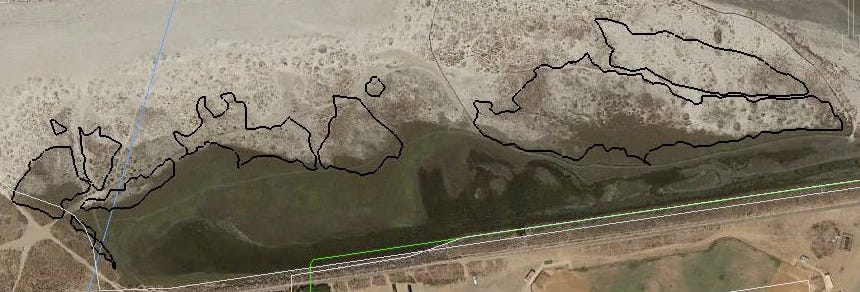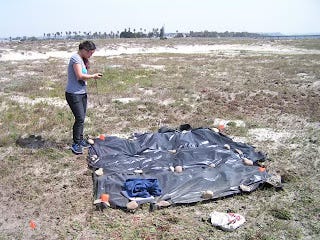Finding the best way to fight invasive plants in California's estuaries
Research I started in 2013 is finally published!
Although I review books and write about my experiences with rare and endangered species, the main purpose of this Substack is to report on and explain the latest science concerning climate change and the environment. Covering everything from electric vehicles to rewilding projects in Europe, I delve into the latest published papers and explain them the best I can.
When I worked on my master’s degree in environmental science, I studied a range of subjects—everything from coastal conservation and sea level rise to gardening and green transportation—so I feel qualified to write about a variety of topics. Scientific papers can still be quite dense, and it takes some time and effort before I feel confident that I understand the workings of these publications.
I feel a lot more confident explaining the science in the paper that I’ve chosen to cover today, as I am one of the researchers who conducted this study.
This research came about while I was volunteering a lot with the San Diego River Park Foundation, a terrific organization. In seeking to create a continuous, walkable park from the river’s headwaters to its mouth at the San Diego coastline, this organization has achieved a great deal in preservation of open spaces, conservation, and restoration.

I was helping with some restoration efforts at the river’s estuary in Ocean Beach, a coastal neighborhood of San Diego. At the time, much of the estuary was blanketed with invasive European sea lavender. We organized large groups of volunteers to pull the weeds out, yet despite our efforts, much of the sea lavender soon returned.
California wetlands have been invaded by two nonnative sea lavenders in the last 25 years: Algerian sea lavender and European sea lavender. In some areas of infestation only a few grow in and among the native plants, but in other places they have blanketed the estuaries, completely pushing out the native estuary plants. They produce a lot of seeds that can float around and be dispersed by the tides. They also spread by root, which is be a particularly insidious ability of some invasive plants.
Frustrated, I looked into any sort of information I could find about getting rid of the sea lavender. As it had been introduced to Southern California so recently, there wasn’t much information I could find on the new species, let alone any information on getting rid of it.
I can’t recall how I came across solarization, or tarping, the agricultural technique of covering land with plastic sheets or other material to kill weeds, but it seemed easy to do and adaptable to treating estuaries to rid them of weeds and invasives. It works by creating a greenhouse effect directly into the ground, heating the soil to well over 100 degrees Fahrenheit for more than two feet below the surface. This kills everything, plants, roots, even killing off seeds.
I approached the folks at the River Park Foundation and asked if I could run a small experiment, treating plots of the estuary with three techniques: hand pulling the lavender, scraping it away with garden tools, and solarization.
The River folks were supportive of the trial. We talked to folks at Fish and Wildlife, who were supportive of the project as well. In March of 2013, we commenced our trial. We weeded and scraped two plots and put a tarp over another plot for three months. One plot was untreated, as a control. After the tarp was pulled up from the one plot, I continued to monitor the plots for months.

Associates at UC Santa Barbara’s Marine Science Institute and the U.S. Fish and Wildlife Service replicated the initial trials from 2013 at two other coastal sites, one at Agua Hedionda Lagoon, a few miles north of San Diego, and at Carpinteria Salt Marsh, north of Los Angeles. Besides the methods I tried, the team included treatment with herbicide in their comparisons.
What we found
Among the treatments, tarping had the best overall results. It is far less labor intensive than either hand-pulling or scraping; it is also less disruptive to the soil than scraping. Herbicide was possibly the least effective in removing the nonnative lavender.
Tarping reduced the amount of nonnative sea lavender to near zero. The lavender in the tarped areas also decomposed on site, so there was no problem with disposal. Over a year after treatment, the tarped plots hade, overall, fewer nonnative sea lavender plants and more native plants than plots treated with other methods.
I hope the results of our work can help folks with estuary recovery. I’d be interested to find out if the solarization technique could be adapted to treating other estuary weeds.




Fascinating!
This is an awesome experiment. I had no idea Sea Lavender was even invasive! I am curious as to how tarping could help with controlling other invasive plants.